The emissions-reducing potential of alternative proteins might just save our planetary bacon. But where does faux fish fit into the mix?
The sight of lab-coated technicians operating shiny steel vats takes some getting used to. It’s a far cry from industrial chicken barns and abattoirs. This is cellular agriculture; farming on a microscopic scale, cultivating cells instead of animals. And quite possibly the future of how the world gets its protein.
Amid growing concern around the ethics, emissions, health and land use when it comes to rearing animals, interest in lab-grown proteins is soaring.
Lab-cultured meat appears to be hitting its acceleration point, and with livestock accounting for over a third of food production’s share of global greenhouse gas emissions, it could prove a vital ally in keeping the net zero dream alive.
One innovator riding the wave of the burgeoning cultivated meat and seafood sector is Carrie Chan, founder of Singapore-based Avant Meats. Turning her entrepreneurial mindset to the pressing issue of feeding the planet’s nearly 8bn-strong population sustainably, she has created the world’s first lab-cultured fish fillets. Chan envisages a day in the not-too-distant future when tucking into a fish supper no longer means depleting our under-threat oceans.
“Traditional ways of producing meat are continuously and increasingly under threat due to climate change and the risk of pandemics,” she says. “Food security is a big concern for many governments, and we’re offering an additional solution.”
Mainstream adoption of ‘alt-proteins’ such as dairy-free milk in coffee and entirely lab-grown cheeseburgers has been touted as an important marker for one of three ‘super leverage’ tipping points with the potential to turbo-charge the planet’s transition to net zero.

Carrie Chan, founder of Avant Meats and creator of the world’s first lab-cultured fish fillets
Meat and dairy consumption account for around 14% of total carbon emissions. The impact of eating fish meanwhile is more deeply connected to the damaging effect it has on the ocean’s ecosystem.
Chan’s own journey from meat-eater to activist began in 2014. She started thinking about lessons she’d learned years earlier in school about some of the factors behind hunger and famine: poorly managed land, and crops that might feed humans being used instead to rear beef cattle and poultry.
“I’ll just eat vegetables,” Chan recalls deciding. “I felt very light after eating and I slept better, so I thought it must be doing something good for my body. The more I looked into it, the more it became a one-way journey that led to me not eating animal products any more.”
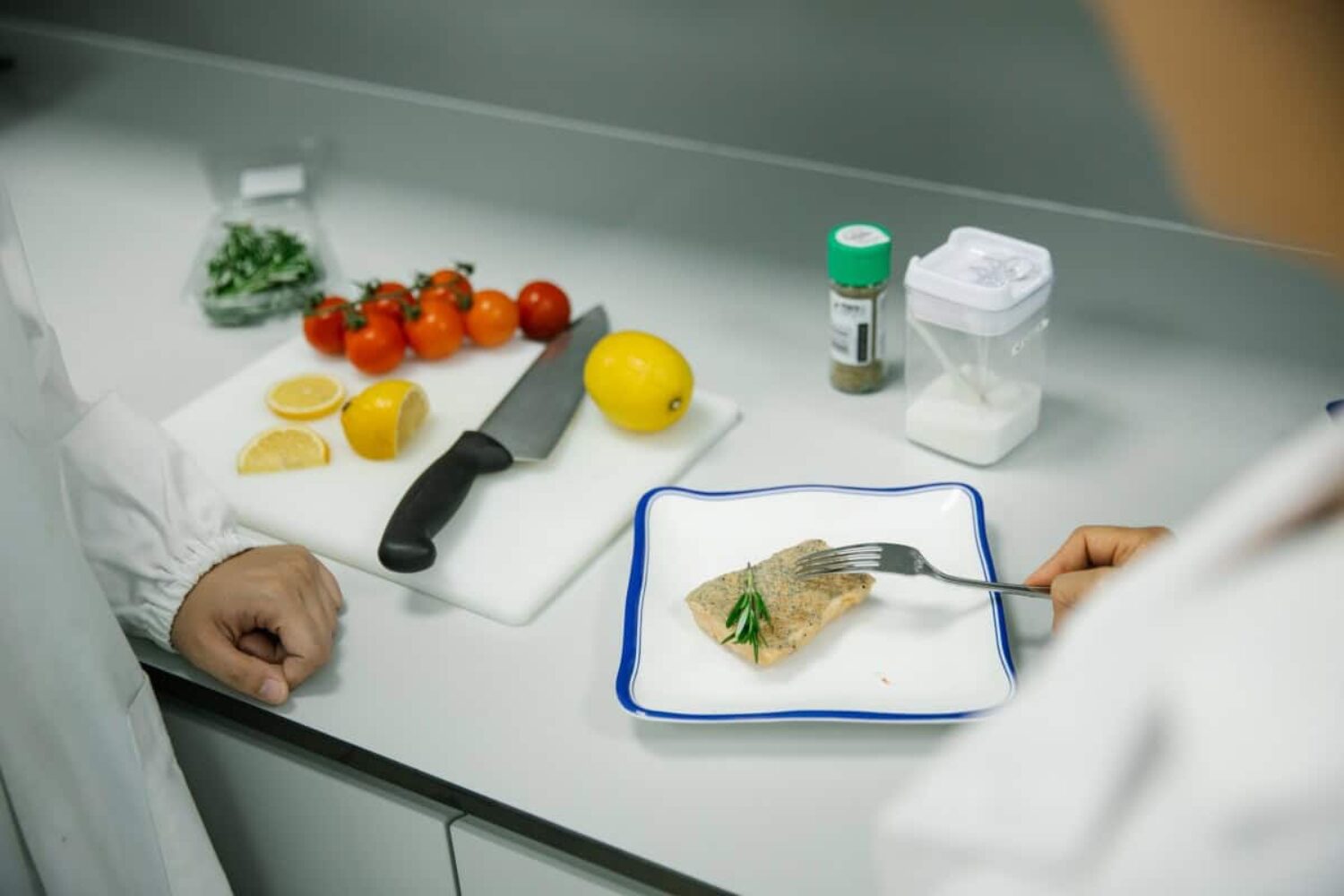
Chan’s choice to prioritise fish was influenced by her upbringing in Hong Kong, where seafood is a dietary staple
In 2018, she abandoned her career in architecture and took up a part-time role with the Lever Foundation, a US-based charity working primarily in Asia to promote alternative proteins. Lever’s investment arm, Lever VC, was pouring cash into a nascent cultivated meat market which, at the time, was centred largely in the west. Chan spied an opportunity to bring it home, and, with Lever’s help and investment, founded Avant Meats.
Her decision to focus on fish stems from her own upbringing in Hong Kong, where diets are often rich in seafood. Globally, around 200m tonnes of fish and seafood are produced a year in a market worth $676.2bn (£534bn). Asia accounts for over 88% of that production, and consumes around two-thirds of the total. While some wild catch comes with a low-carbon footprint overall, a third of our fish stocks are now overexploited, and the world’s fishing fleet spews around 144m tonnes of CO2 a year.
Meanwhile global demand for fish protein is on the rise, and aquaculture – farmed fish – is rallying to keep up. The sector’s rapid growth means it now outstrips wild catch by 30m tonnes a year Although technological advances have improved the sustainability and efficiency of aquaculture, some farmed species such as tilapia, which is reared extensively in China, can carry a larger carbon footprint than chicken.
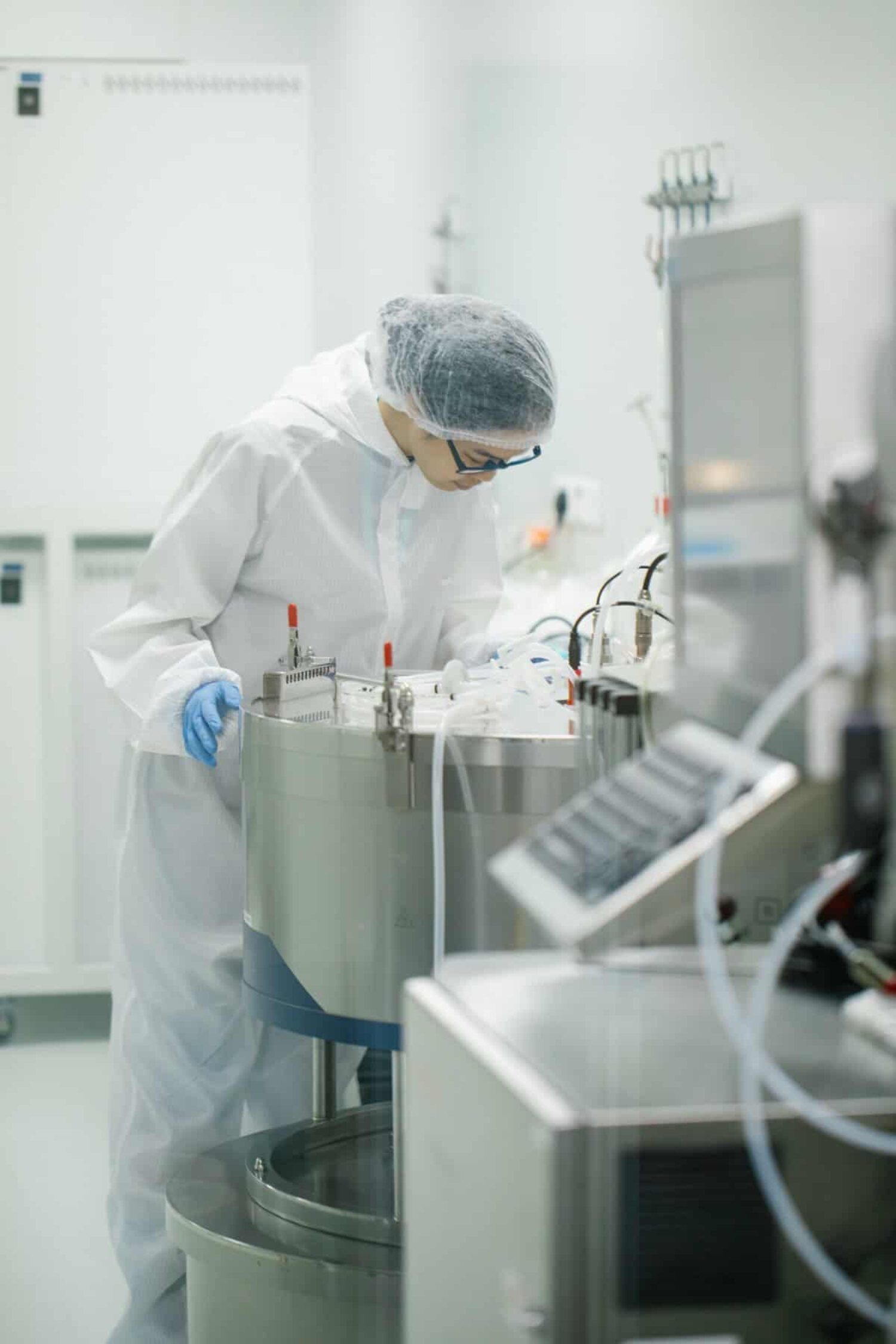
Lab culturing offers a faster, parasite-free, and environmentally friendly alternative to traditional fish farming
Avant Meats begins by harvesting a cell sample from a living fish and growing it over four to six months to build a starter cell culture, which can be duplicated time and time again.
The starter is stored in a dormant, frozen state for future use, and a couple of million cells at a time are grown on by feeding them nutrients inside a bioreactor. After six weeks, there’s sufficient cell mass to create an edible product, and, as what emerges from Avant Meat’s tanks resembles an unappealing, fishy protein slurry, it is blended with plant-based ingredients to give it form and texture.
Lab culturing is around four times quicker than farming fish, and its sterile environment means there are no parasites to worry about, no animal welfare issues, nor any of the heavy metals, microplastics or transport-related emissions associated with a wild catch. There’s no need to turn land over to growing fish feed, and by licensing Avant Meats’ technology, Chan hopes the supply of seafood can be decentralised to meet local needs.
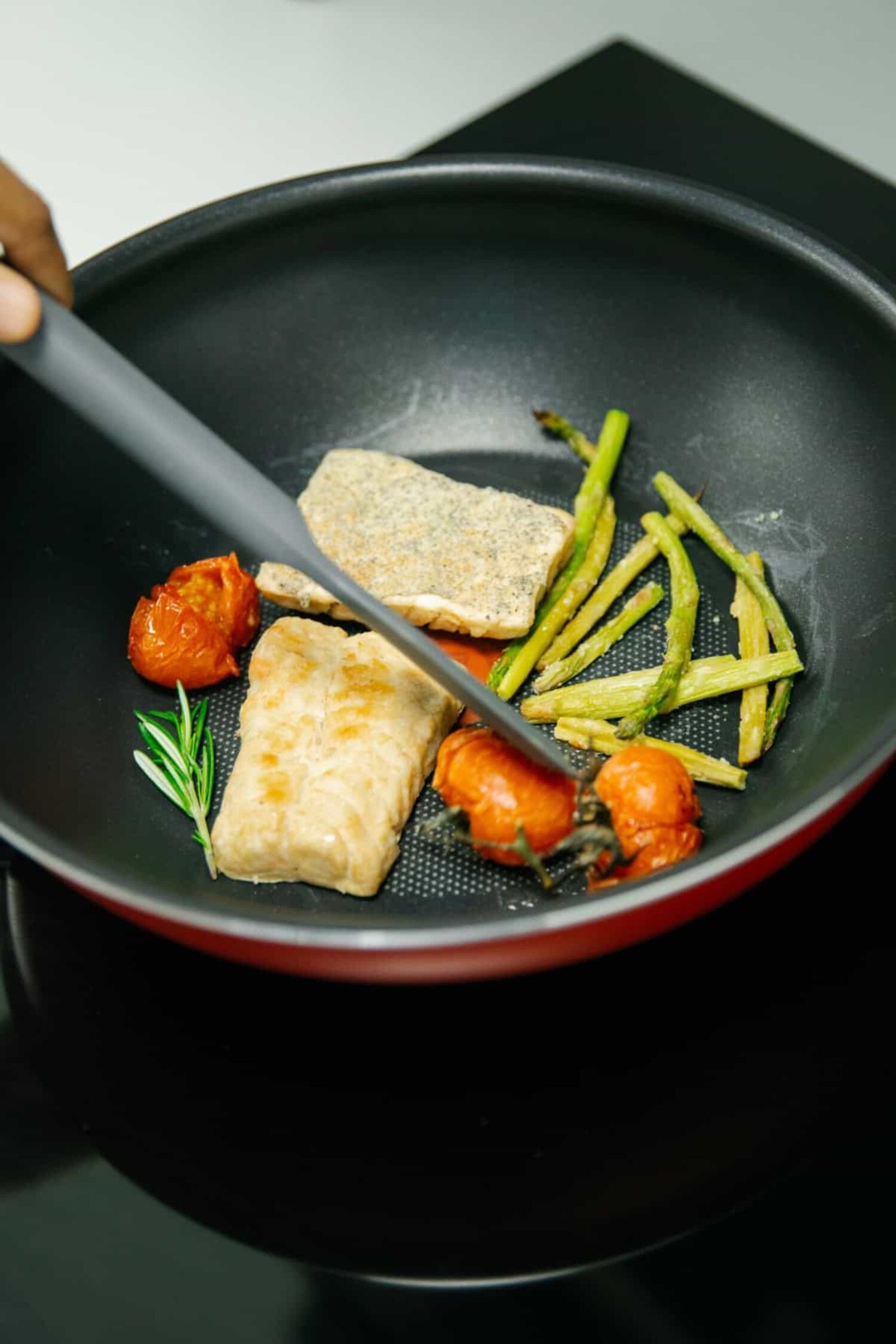
Consumers are still hesitant to embrace lab-grown meat, but Chan believes attitudes will change
Some analysts forecast that cultivated meats could make up 35% of global meat consumption by 2040. In recent weeks, news of the emergence of lab-grown eel raised excitement about the potential for millions of people to eat the popular sushi staple without damaging the underwater ecosystem. However research demonstrates that many consumers are still chewing over the idea of adding lab-grown meat to their menus, with perceptions that it is unnatural or unhealthy fuelling reluctance.
In response, Chan suggests anyone who feels squeamish at the idea of cultivated meat might take a look at the contents of their own fridge, or at what’s on offer at their local pub. A bioreactor is really just a fancier, more refined version of a fermenter, she points out. “We’ve been using microorganisms to make food for years – this is no different to making yoghurt or beer. At the end of the day, there’s nothing too sci-fi about it.”
Still, it may be the end of the decade before the average supermarket shopper gets to wrap their tastebuds around a lab-grown fish finger. Although Avant Meats is moving at pace, recently scaling up production and moving into a pilot facility in Singapore, the company and others like it has to navigate an ocean of regulatory red tape. To date, only the US and Singapore have approved a few, limited cultivated meat products for general sale. Meanwhile, current high start-up costs, and an end product that is around three to five times the price of a conventionally grown, organic equivalent, can make investors hesitant.
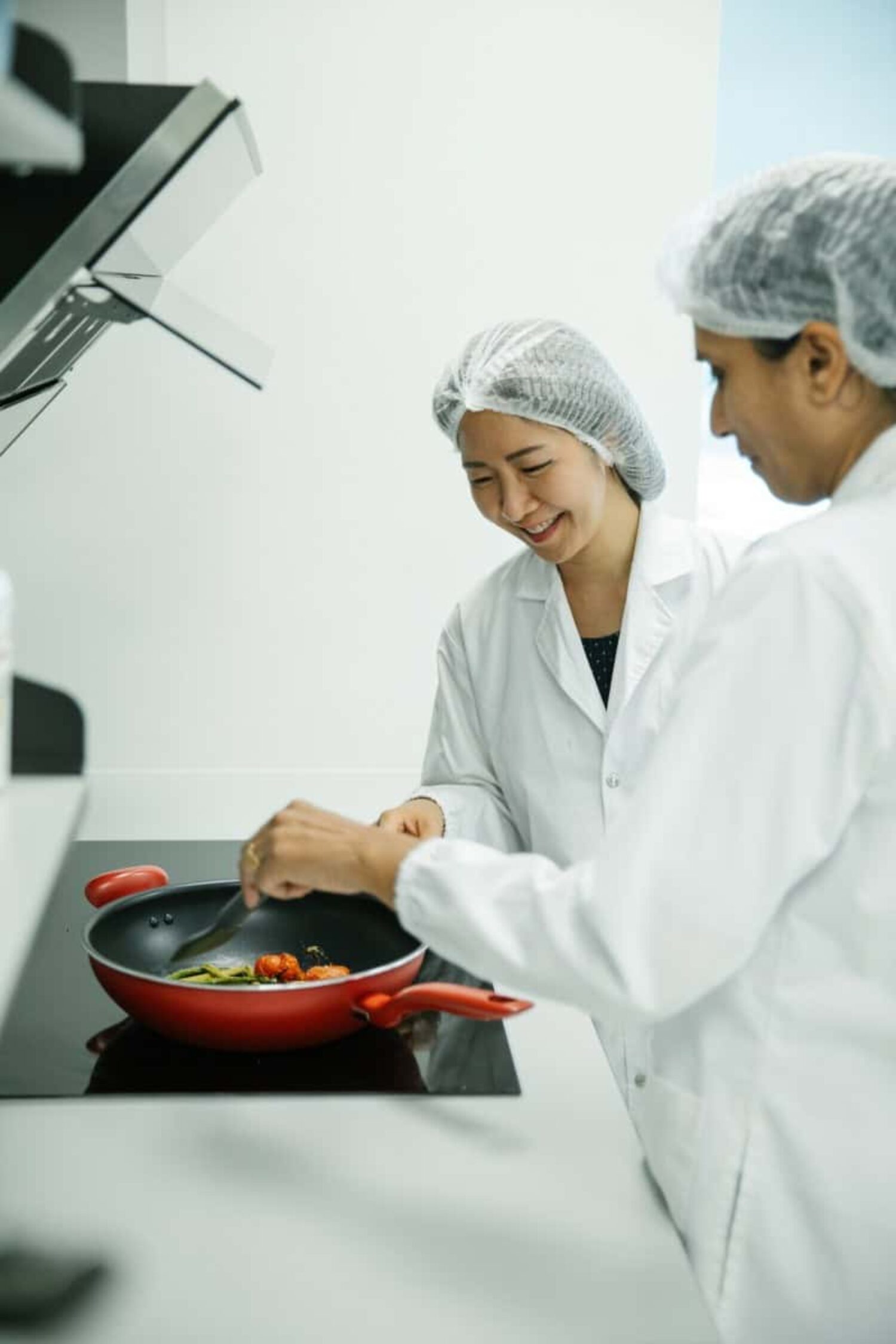
‘We can no longer rely on the traditional ways of making food. We need to diversify,’ Chan tells Positive News
But Chan senses there’s an inevitability to cultured meat and fish becoming a dietary staple. Costs and end prices will fall with scale, reaching price parity with conventional products as early as 2026, she says. As with the renewable energy boom, early-adopting, climate-conscious consumers will mobilise a move to the mainstream. Consumer habits will – with the right incentives – gradually shift. Plant-based faux meats are paving the way for more nascent (ie lab-cultured) alternatives as well, despite a recent slump in sales. It’s not merely possible for alternative proteins to become a dietary staple, says Chan. It’s a necessity.
“Right now, governments cannot avoid looking at alternatives,” says Chan. “We can no longer rely on the traditional ways of making food. We need to diversify. We need to find new ones.”
Three ways to support the rise of alternative proteins
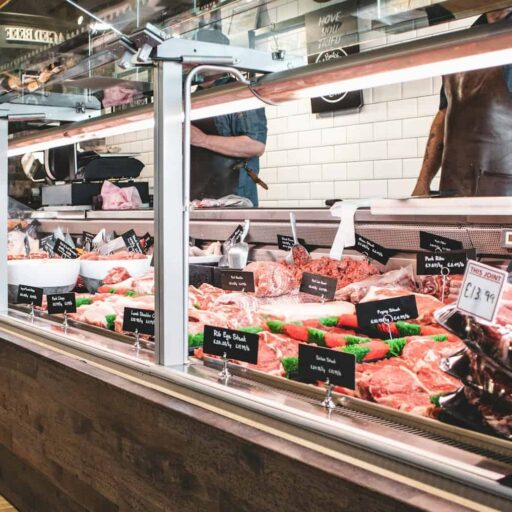
Chan suggests it would be useful for people to get a real handle on the current state of food production to understand the need for change. “Usually we don’t even think about it,” she says. “If you spend some time learning how conventional meat is produced, it’s very easy to come to the conclusion that existing methods are not sustainable. That way, when you’re offered an alternative you’ll be more ready to accept it.”
Image: Kyle Mackie
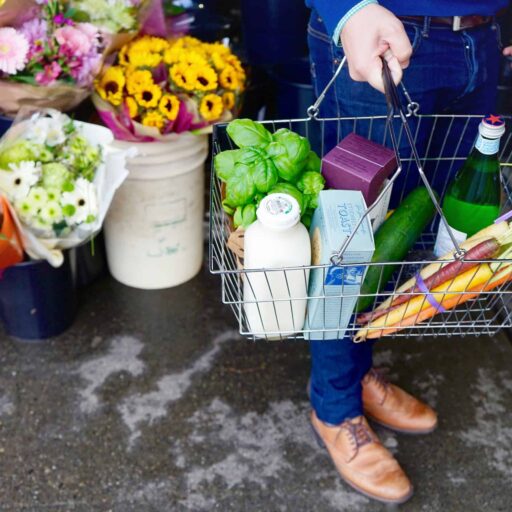
Emissions transparency levels the playing field and means we can make informed choices about the sustainability of the foods we eat. Two-thirds of Europeans want climate labelling, according to research by the EU’s European Institute of Innovation and Technology, and it’s a measure already being scrutinised by US Congress. “Consumers need to be guided,” says Chan. “At the moment there’s no clear guidance for the sustainability-conscious shopper.”
Image: Tara Clark
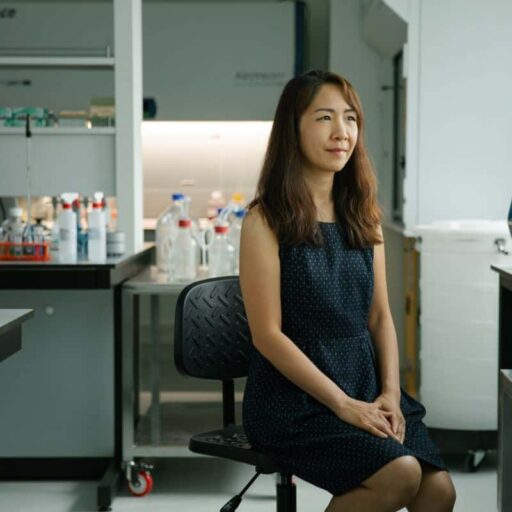
“Support anyone exploring unconventional ways of making food,” suggests Chan. “It’s not going to kill you to try something new, and you might even like it. Stay open-minded to different kinds of food – it’s the only way our supply systems are going to change.”
This article is part of Positive Tipping Points, a series about people who are discovering ways to trigger significant and cascading positive changes within the climate crisis. Produced by Positive News in partnership with Imagine5.
Main images: Juliana Tan
Help us break the bad news bias
Positive News is helping more people than ever to get a balanced and uplifting view of the world. While doom and gloom dominates other news outlets, our solutions journalism exists to support your wellbeing and empower you to make a difference towards a better future. And as Positive News’ audience and impact grows, we’re showing the rest of the media that good news matters.
But our reporting has a cost and, as an independent, not-for-profit media organisation, we rely on the financial backing of our readers. If you value what we do and can afford to, please consider making a one-off or regular contribution as a Positive News supporter. From as little as £1 per month, you’ll be directly funding the production and sharing of our stories – helping them to benefit many more people.
Join our community today, and together, we’ll change the news for good.
SUPPORT POSITIVE NEWS

